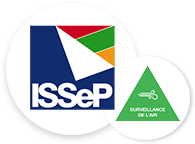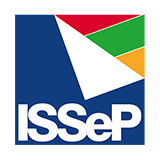As you probably know, air pollution is the main environmental health risk in Europe. According to the new guidelines from the WHO (World Health Organization),
- 79% of the Walloon population is exposed to nitrogen dioxide (NO2) concentrations with harmful effects;
- 99% are exposed to fine particulate matter (PM2.5);
- 100% are exposed to ozone (O3).
To protect citizens' health, it is essential to know the levels of these atmospheric pollutants at every point in the territory. This is precisely what the "Microcapteurs" project proposes as part of the ENVIeS plan.[1].
This study, led by the ISSeP (Institut Scientifique de Service Public), aims to develop, manufacture, and install an ambient air quality monitoring station in each Walloon municipality based on lowcost sensors. These ministations log minute-by-minute temperature, relative humidity, atmospheric pressure, concentrations of various gaseous pollutants (nitrogen oxides NO and NO2 and ozone O3), as well as fine particulate matter (PM2.5), and transmit the collected measurements in near real-time. These measurements are aggregated into an air quality index accessible via the full version of the website https://wallonair.be (Menu "Live Measurements" at the top right, "Mini-station" tab).
To achieve homogeneous coverage of the Walloon territory, it is proposed to all towns and municipalities in the south of the country to place one of these ministations near their town hall. Currently, nearly sixty municipalities have already responded to the call and are contributing to this unique network, which completes the official network of 26 stations equipped with reference analytical equipment to ensure compliance with legal limit values. If you also wish to take part in this project, we would be grateful if you could respond before August 15 to the address This email address is being protected from spambots. You need JavaScript enabled to view it., attaching a photo of the support on which the "Saïga" ministation could be installed. This will allow us to determine the appropriate mounting system to design. Thanks to its batteries and solar panel, the device is energy-autonomous, so no electrical supply is needed. The mini-stations and installation materials are provided free of charge to entities wishing to join this research project. The delivery of the equipment will be determined based on the responses to minimize travel. The installation of the equipment will need to be carried out by yourself, but tutorial videos are available on the website https://antilopinae.issep.be.
[1] http://environnement.sante.wallonie.be/home/expert/plan-envies.html








